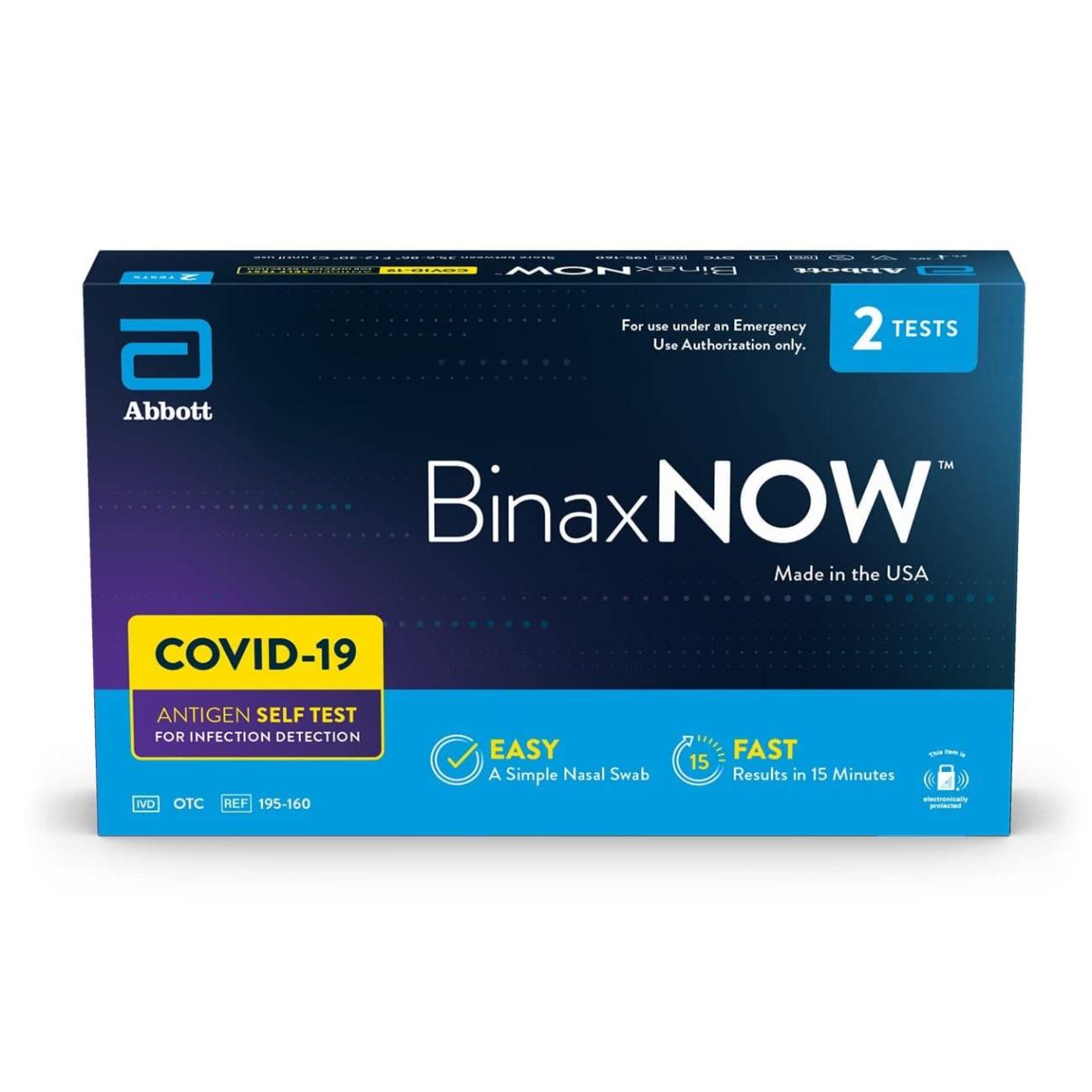A New COVID-19 Variant Is Dominant In The U.S., According To The CDC

"Hearst Magazines and Yahoo may earn commission or revenue on some items through these links."
While the first days of the COVID-19 pandemic feel like forever ago, new COVID variants continue to pop up, and probably will continue to do so for a long time.
So, it’s good to be prepared. This summer, new sub variants of the original COVID-19 strain are spreading across the United States—including EG. 5 (commonly known as Eris) and BA.2.86.
First, some good news: The new variants are not more dangerous compared to earlier strains. So far, hospitalizations and COVID-19 related deaths are far below previous pandemic peaks, according to CBS News. The accessibility of COVID-19 tests and vaccines have helped stop the spread, too.
However, hospitalizations and deaths related to COVID have seen an upward tick in the last few weeks, according to the Centers for Disease Control and Prevention (CDC). These variants are important reminders that COVID caution shouldn't be thrown out the window.
"There have been a ton of new variants, and there will be more variants," explains Dr. Michelle Prickett, MD, who specializes in critical care medicine at Northwestern Medical Group in Chicago. "It's not a time to panic. We have knowledge and tools to keep [infection rates] low."
Meet The Expert: Dr. Michelle Prickett, MD, is a doctor specializing in critical care medicine at Northwestern Medical Group in Chicago.
Below, Women's Health dives into these new variants, including what symptoms to look out for if you think you’re sick.
What are current new COVID variants, BA.2.85 and EG.5?
Remember in December 2021 when everyone was getting COVID again? That was all thanks to Omicron, one of the most highly infectious COVID-19 variants so far. At the time, Omicron was the most prominent COVID variant out there. This variant was known for spreading rapidly, but typically resulting in less severe disease, according to the Mayo Clinic.
However, the original SARS-CoV variants continue to adapt, according to the CDC, and Eris is dubbed by some experts as the "grandchild" of Omicron. Eris currently accounts for about 20.6 percent of COVID-19 infections across the United States, according to the CDC. The variant’s spread is calculated with a degree of uncertainty, though, due to the rapid increase of infections. But this is a close estimate.
Eris has been declared a "variant of interest" by the CDC, and can reportedly spread easily due to a notable mutation that allows it to evade the immune system’s antibodies and vaccines, according to the New York Times.
However, it's important to note that this variant is no more dangerous than the ones that already out there. The World Health Organization categorizes it as "low at the global level" in terms of risk.
Eris is currently the dominant COVID strain in the US. However, there are currently seven definitive cases of another COVID strain, BA.2.86, across the world, according to the New York Times. (This number is also likely a lot larger, due to how COVID cases are reported.)
Eris has a larger number of mutations compared other variants, particularly in the spike protein, or what the virus uses to infect, Jesse Bloom, a professor at Fred Hutchinson Cancer Center told the New York Times.
BA.2.86 has an evolution comparable to Omicron’s divergence from earlier COVID variants, meaning it could be significantly more impactful than the currently widespread variants. Translation: Omicron was significantly more infectious and BA.2.86 could be, too.
However, it's way too early to fully understand this strain—or to determine if it is as infectious, according to the New York Times.
So, there's no cause for concern quite yet.
Are the symptoms for the new COVID variants different?
At this point, you might be able to recount the typical COVID symptoms like your ABCs. The newest variants' symptoms are pretty similar to older strains, but here's a rundown of everything that you might experience, according to the CDC, and Dr. Prickett:
cough
headache
muscle aches
sore throat
fatigue
fever or chills
congestion or runny nose
nausea or vomiting
diarrhea
shortness of breath or difficulty breathing
Eris is detected and treated the same way as other variants, as it responds similarly to diagnostic tests and prescription antivirals such as Paxlovid, according to the New York Times.
Should I get a booster?
As of right now, you don't need a booster if you are already up-to-date on your vaccines, according to Dr. Prickett. For most adults, that means a vaccine and one booster.
"I would encourage people to talk to their physicians and to see if they are eligible for a booster," Dr. Prickett says. "But there is no recommendations for an additional booster at this point."
Will the fall 2023 vaccine boosters work for the new COVID variants?
In June, the FDA officially recommended a formulaically updated booster. This formula will target the XBB 1.16, which is a descendent from Omicron, and will be more effective against variants like Eris.
However, its makeup is not necessarily meant to protect against the BA.2.86 strain, some experts told CBS News, so if that strain becomes more dominant in the United States, it might upend vaccine rollouts. It's still too soon to tell how BA.2.86 will spread.
These formulaically updated vaccines may be ready around late September 2023, according to CBS News, but they'll still need FDA approval and updated booster recommendations from the CDC, so it's unclear when they will be widely available.
What should I do if I test positive for COVID?
The protocol for testing positive is largely the same as it was earlier in the pandemic. Dr. Prickett recommends isolating for at least five days, but ideally 10 days—or until you begin testing negative.

COVID-19 Antigen Self Test
amazon.com
$15.88
Prescription antivirals like Paxlovid are also highly recommended as a course of treatment, according to Dr. Prickett. If you test positive, it's worth asking your doctor if antivirals like are a good option for you.
"Antivirals work best if you take them early on in the course of your infection," she explains. "You want to have antivirals within hours to early days. You don't want to wait."
Do COVID tests work for the new variants?
Yes. And testing "early and often" is the best protocol with these new variants floating around, says Dr. Prickett. "If there's a concern, go ahead and test," she says. "If there's still a concern, retest."
If you test negative while exhibiting symptoms, it's worth waiting around 24 hours and testing again to ensure you're actually negative she adds. Hand-washing, masking, and improving air ventilation are helpful, too. These methods are especially useful to stop the spread as experts try to understand new variants, virologist Paul Duprex told NBC News.
Still, with the information out there right now, there is no cause for concern.
"We know how it is transmitted. We have a lot more tools," Dr. Prickett explains. "Testing really is the main key to get this contained to make sure we have are eligible potentially for good treatment options."
You Might Also Like
